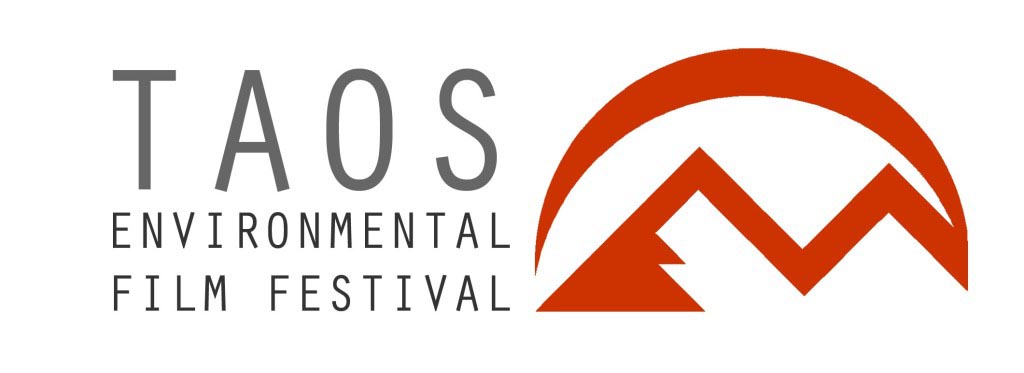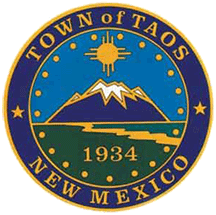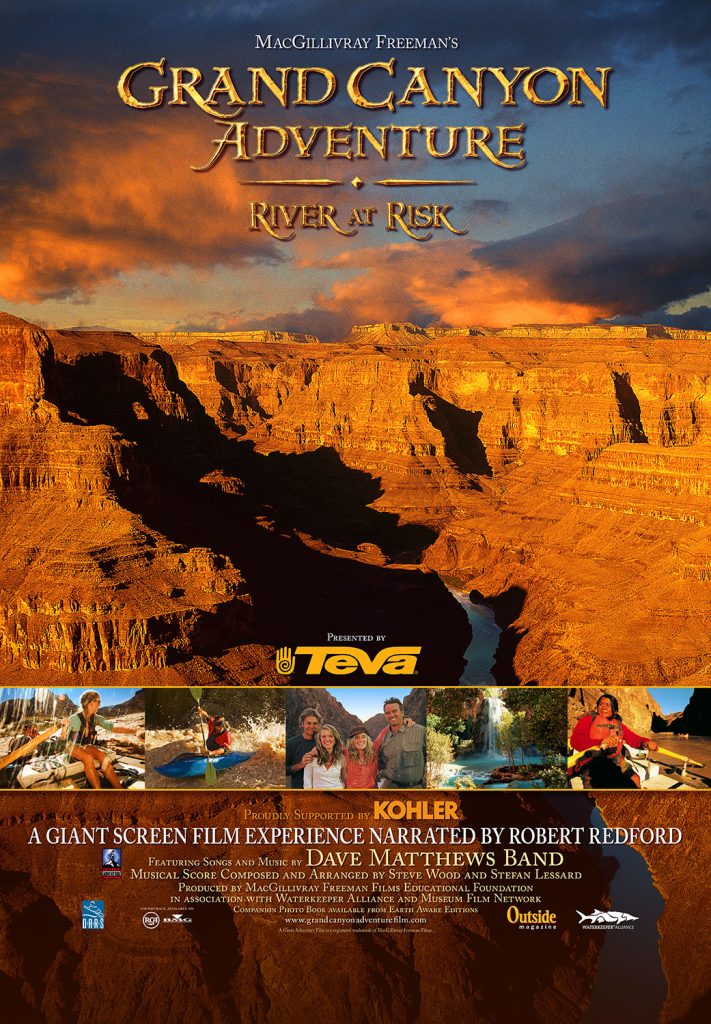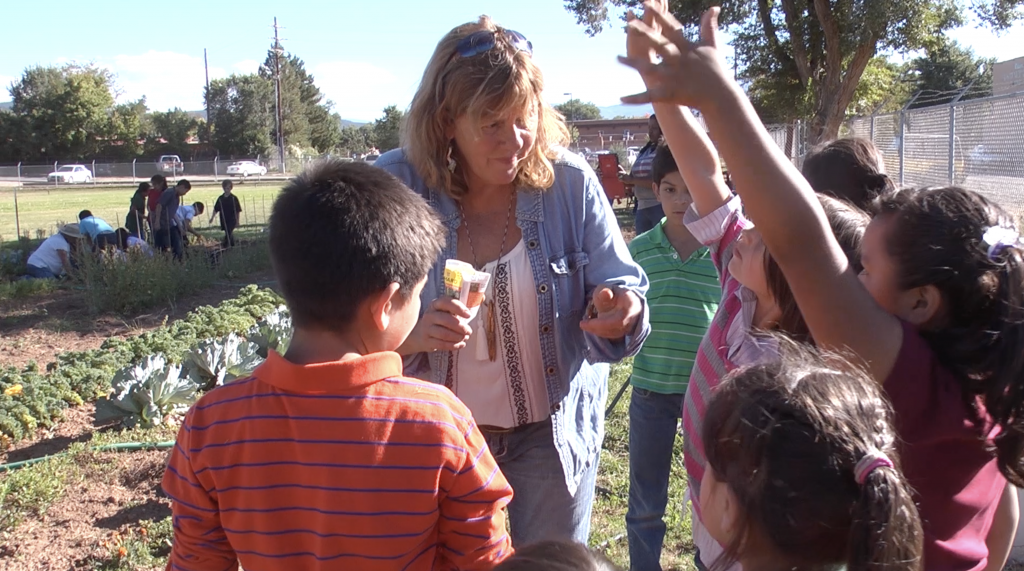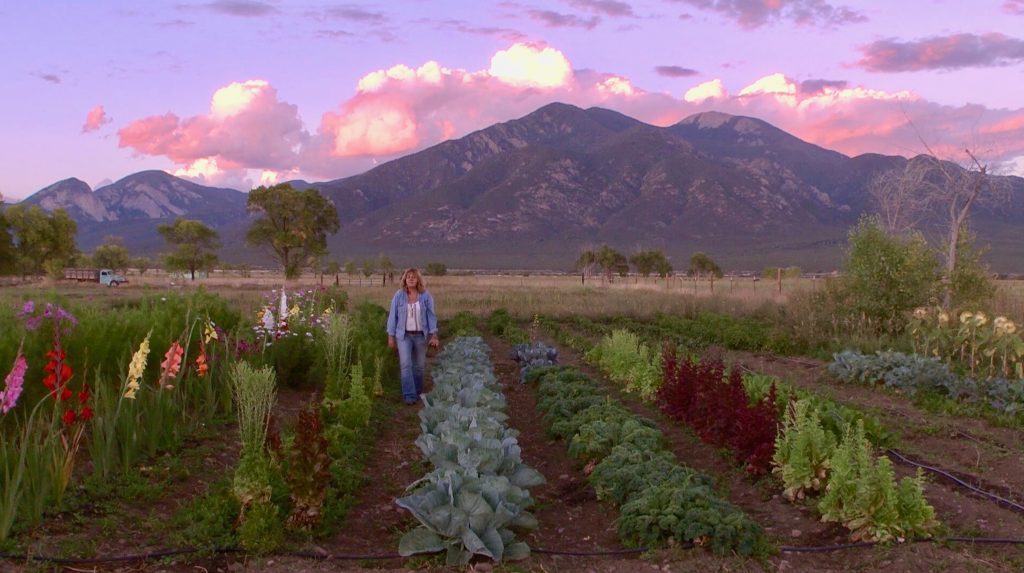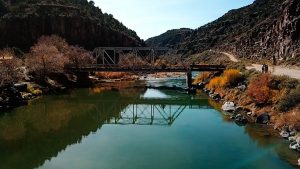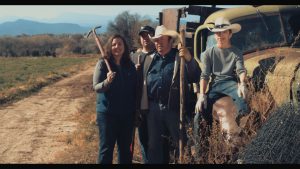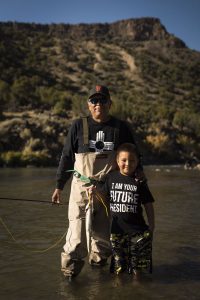Festival Overview
Schedule
SOMOS: POETS FOR THE ENVIRONMENT
WED 4/18: SOMOS 7pm
Poets for the Environment
MULTI-MEDIA MOVEMENT PERFORMANCE
6PM Friday April 19 @ TCA
Music by Gary Yamane from his album Voices in the Wind. Dancers: Rima Ralff, Dana Klepper-Smith and Jean E. Stevens.
EARTH DAY CELEBRATION, BATAAN HALL, UNM-TAOS
11AM-1PM
CELEBRATION for EARTH DAY 4/22 115 Civic Plaza Drive: Bataan Hall, UNM-Taos. There will be various films, speakers and events to be arranged.
Robby Romero “Live From Standing Rock” and a half hour of his short films which address Native American empowerment. A Canon film workshop display of the latest filmmaking equipment, snacks and interactive participation will be presented. Any donations go to the Pueblo Educational Fund.
People
Dave Travis - Web Development and IT Support
Environmental Activism in Film Awardees
Admission to the Taos Environmental Film Festival is FREE
A donation of $5 suggested
The Taos Environmental Film Festival is a fundraiser for: Amigos Bravos, Rivers & Birds, Renewable Taos, Taos Center for the Arts & SOMOS.
Inspired by the power of films to make positive changes for humanity, and as a result of the United States departure from the Paris Climate Agreement, the 2018 Taos Environmental Film Festival dates were changed to coincide with Earth Day. The theme of the 2018 edition of the festival is “Finding True Happiness in an Unsettled World”. The festival honors all the 2018 Official Selection filmmakers for their devotion to powerful filmmaking and their efforts to preserve our planet and all its inhabitants. The following are the 2018 Taos Environmental Activism in Film Award Honorees:
FEATURE
Poisoning Paradise
Grand Canyon Adventure
National Parks Adventure
The Last Animals
Tibetan Illusion Destroyer
BHUTAN: Taking the Middle Road to Happiness
FILMS
Malama Ko Aloha
Sea of Life
Last Rush of the Wild West
Redefining Prosperity
Beyond Crisis
Gray Wolves of the Southwest
GRAND CANYON ADVENTURE: RIVER AT RISK
Thursday 4/19 10am
Director: Greg MacGillivray
TRT: 44 min
GRAND CANYON ADVENTURE: RIVER AT RISK Brings Whitewater Excitement To The Giant IMAX Screen And Calls Attention to Global Water Issues.
MacGillivray Freeman Films, producers of the blockbuster giant-screen hit Everest, will make a splash with their new 3D film for IMAX Theatres, Grand Canyon Adventure: River at Risk 3D, premiering on March 14 in anticipation of World Water Day (March 22). Narrated by Robert Redford, the giant screen film combines exhilarating river-rafting action on America’s most iconic river with the first-ever IMAX 3D images of the Grand Canyon to tell an important story of how ordinary people can make a difference for our parched planet – one that is running out of clean, fresh water so fast that the U.N. estimates that 40% of the world could face life-threatening shortages by the year 2050.
Leading this important river expedition are two environmental heroes: world-renowned river advocate
Robert F. Kennedy Jr. and celebrated author/anthropologist/explorer Wade Davis, accompanied by their daughters—Kick Kennedy and Tara Davis—for whom this journey will become a moving rite of passage. They are guided by Shana Watahomigie, a member of the Havasupai tribe and the first Native American to become a National Park Ranger and river guide. A stirring score featuring songs and music from the Grammy Award-winning Dave Matthews Band sets the mood for this adventure that explores the issues, presents real solutions, and delivers an uplifting message of hope for future generations.
National Parks Adventure
Director: Greg MacGillivray
TRT: 43 min
Narrated by Academy Award® winner Robert Redford, National Parks Adventure takes audiences on the ultimate off-trail adventure into the nation’s awe-inspiring great outdoors and untamed wilderness. Immersive IMAX® 3D cinematography takes viewers soaring over red rock canyons, hurtling up craggy mountain peaks and into other-worldly realms found within America’s most legendary outdoor playgrounds, including Yellowstone, Yosemite, Glacier National Park, Redwood National Park, the Everglades and Arches. Celebrate the 100-year anniversary of the national parks with world-class mountaineer Conrad Anker, adventure photographer Max Lowe and artist Rachel Pohl as they hike, climb and explore their way across America’s majestic parks in what is both an action-packed expedition and a souful reflection on what wilderness means to us all.
National Parks Adventure is a MacGillivray Freeman film produced in association with Brand USA and presented globally by Expedia, Inc. and Subaru of America, Inc. with major support provided by the Giant Dome Theater Consortium.
National Parks Adventure was filmed with 15per/65mm IMAX® 3D cameras and is directed by Greg MacGillivray (The Living Sea, Dolphins, Everest) and produced by Shaun MacGillivray (To The Arctic, Humpback Whales). The film is written by Stephen Judson (Everest, To The Arctic) and Tim Cahill (Everest) with a musical score by Steve Wood (Journey to the South Pacific, Humpback Whales).
MacGillivray Freeman Films is the world’s leading independent producer and distributor of giant-screen 70mm films with 38 films for IMAX theatres to its credit. Throughout the company’s 50-year history, its films have won numerous international awards including two Academy Award nominations and three films inducted into the IMAX Hall of Fame. National Parks Adventure follows in the company’s long tradition of films known for their artistry and celebration of the natural world.
Tibetan Illusion Destroyer
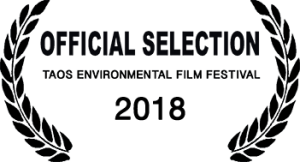 Thursday 4/19 6PM
Thursday 4/19 6PM
Directed and Produced by: Tom Vendetti
Original Music by: Keola Beamer
TRT: 55min
Narrated by: Ann Mortifee
Written by: Tom Vendetti and Ann Mortifee
Edited by: Tom Vendetti
Post Production Editing by: Robert Stone and Christopher Hedge
Camera by: Tom Vendetti and Rishi Jha
Filmed in Tibet and Nepal over two years, the film documents an ancient Tibetan ceremony, the Mani Rimdu Festival, that creates awareness of the illusions that cause human suffering. Vendetti’s short film “Dali Lama and Happiness” will also be shown.
Lahaina resident Keola Beamer scored the original music for the film and will be present to talk about his composition.
The message of “The Tibetan Illusion Destroyer” is timeless: illusions stand in the way of finding happiness.
“There is much wisdom that indigenous cultures can offer us in terms of achieving inner peace and happiness,” said Dr. Vendetti, director of Mental Health Kokua in Wailuku. He believes that his film’s message is extremely relevant, considering the high level of internal and external conflict that many of us are facing every day.
“The film offers insight into how to obtain peace in the outer world by making peace within ourselves,” Vendetti said. Buddha was quoted in the film with this message: “We are what we think. All that we are arises with our thoughts. With our thoughts, we make our world.”
“In other words,” said Vendetti, “if we think negative thoughts on a regular basis, it will result in feelings of anxiety and even depression. My film explores this knowledge and wisdom via an interpretation of the Mani Rimdu Festival.”
Beamer said of his experience working on the film, “‘Tibetan Illusion Destroyer’ was a wonderful project to work on, and I was grateful to be called in to compose the score for the film. What initially attracted me to the project was Dr. Vendetti’s idea of understanding the self-imposed matrix of illusions that human beings unknowingly place on their lives. By exploring how other cultures and religions ameliorate these mental constructs, is it possible, I wondered, that we could enhance the happiness and meaning of our own lives?”
The music Beamer created for the film was recorded in Kathmandu over a period of about a year. “It was important to me to create a score that would authentically support the film by using the native instruments of the Nepalese people. Accordingly, I worked to understand the tonal palette of their instrumentation,” he said.
Beamer also had to discover a method of communicating the music in his head to the musicians onsite without any type of written notation. Being Hawaiian and coming from a culture that created hula and oli without a written language (or paper) prior to the arrival of the Europeans, this was not actually too difficult for him.
“I kind of do the same thing with my own family!” he exclaimed. “Luckily, through friends in Kathmandu, Dr. Vendetti and I discovered some excellent musicians. We worked together to create a meditative and authentically supportive score to underpin the magical journey of the film.”
.
https://www.pbshawaii.org/pbs-hawaii-presents-tibetan-illusion-destroyer/
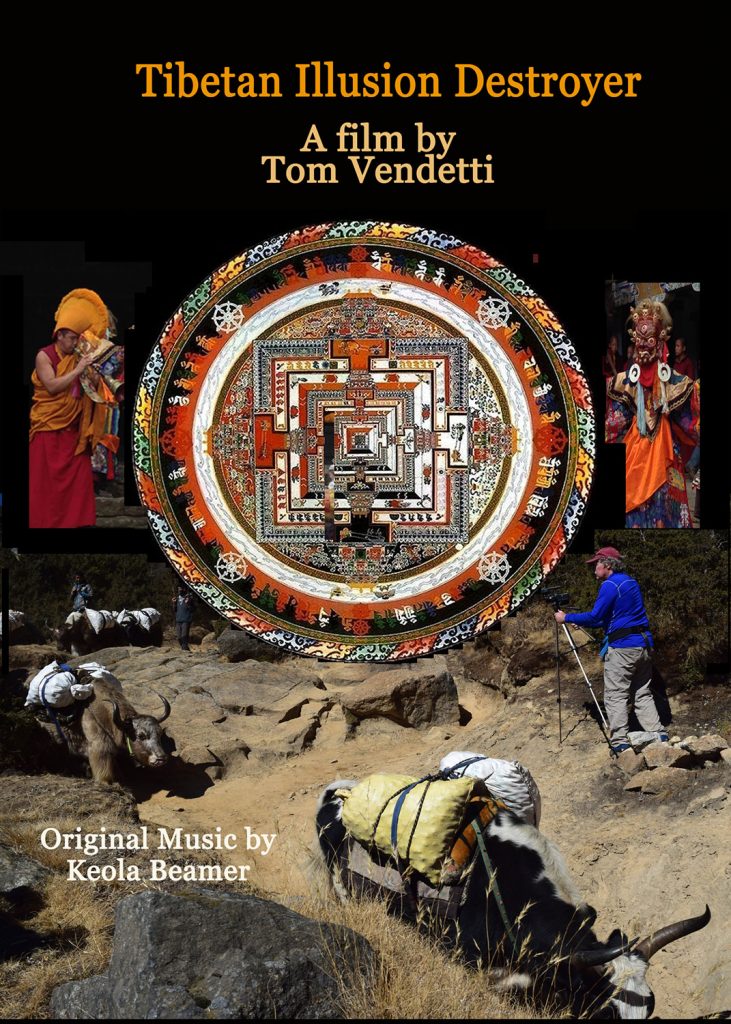
Beamer and his wife, Moana, were invited to be part of the filming in Nepal along with Dr. Vendetti and his wife, Nancy. Together they made several treks along the beautiful and wild mountainous areas of the country at very high elevations.
“One of the truly great things about working with Dr. Vendetti is his genuine aloha and inclusiveness,” Keola said. “Drinking tea with our Sherpa guides and living in harmony with the Buddhist monks and local families provided a wonderful context to understand and create music for the film. It was also an experience Moana and I will remember for the rest of our lives!”
The Mani Rimdu Festival, originating in Nepal, is a 19-day sequence of sacred ceremonies culminating in a public festival lasting four days. The festival is an opportunity for the local Sherpa and Tibetan communities to gather and celebrate with the monastic community. The authentic, colorful ceremonies convey Buddhist teachings, and afterwards a sand mandala is dismantled in the temple and given as an offering at the spring below the monastery. The film documents rare and sacred ceremonies that open a path toward achieving happiness.
San Sang Rinpoche, who is featured in the film, stated, “Everyone is seeking to be happy. Destroying our thoughts and illusions that cause negative emotions – such as anger, jealousy and greed – will result in happiness. Practicing acts of compassion and kindness towards yourself and others will create much happiness.”
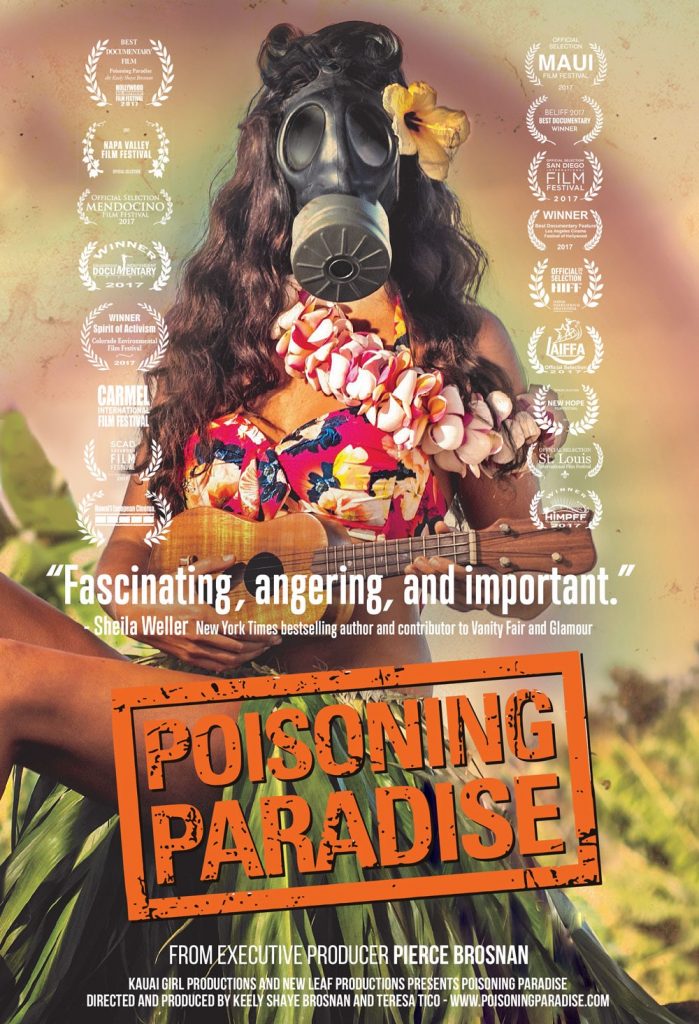
Poisoning Paradise
 Saturday 4/21 8PM
Saturday 4/21 8PM
Directors: Keely Shaye Brosnan & Teresa Tico
Executive Producer: Pierce Brosnan
TRT: 60min
Synopsis
Journey to the seemingly idyllic world of Native Hawaiians, where communities are surrounded by experimental test sites and pesticides sprayed upwind of their neighborhoods. Poisoning Paradise details the ongoing struggle to advance bold new legislation governing the fate of their island home.
In an attempt to diversify an economy that was overly reliant on tourism, policymakers in both Hawaii and Washington, D.C. encouraged the world’s largest biotech companies to utilize Kauai’s favorable climate and fertile soil to test genetically engineered seeds and crops. Corporations including Syngenta, Pioneer DuPont, BASF, and Dow Agrosciences have since applied hundreds of tons of Restricted Use (RU) pesticides on thousands of acres across the Garden Island’s West Side, the traditional homeland of an indigenous and disenfranchised population.
Interviews with local residents, scientists, and healthcare professionals reveal the hardships and ecological dangers of intensive and continuous pesticide applications and the environmental injustice thrust upon people living in one of the most sacred, biologically unique and diverse locations on earth. Award-winning investigative journalist Paul Kolberstein describes Kauai as “one of the most toxic agricultural environments in all of American agriculture.”
As champions of a grassroots movement to make Kauai County Bill 2491 law, local activists battle political corruption, corporate bullying, and systematic concealment by the agrichemical industry.
Although Kauai’s plight might seem like a local issue, this debate is in fact raging around the world as country after country is becoming concerned about pesticides, the future of food, and sustainable farming practices.

Long Synopsis
For three years, war photographer and first-time director Kate Brooks documented the plight of the Northern White Rhinoceros in the midst of a global wildlife trafficking crisis. When she started filming, there were just seven left in the world. Today there are only three.
The Northern White Rhino’s last wild population was poached out of existence a decade ago at Garamba National Park in the Democratic Republic of Congo. Garamba is now ground zero for one of the last viable elephant populations in central Africa. Poachers and park rangers are at war due to the ivory trade.
The film looks at the industrial scale illegal wildlife trade from a global perspective, from Africa to the Far East and the United States. Despite international trade bans, the contraband is openly sold and easy to find in both legal and unregulated domestic markets.
Meanwhile, scientists across the globe use cutting-edge technology to apprehend criminals and save threatened species. In Europe and San Diego, geneticists race to reproduce the Northern Whites using IVF and stem cell technology. In Seattle, a forensic expert uses DNA-testing to trace seized ivory back to the killing fields and the criminal networks behind the trade. And in Kenya, an ivory kingpin is finally put on trial—but will he be brought to justice?
The Last Animals is a sweeping and sobering film about an extraordinary group of people who go to incredible lengths to save the last animals. The film reveals the tentacles of this illicit and nefarious business, which despite its devastating impact, often seems as elusive as a ghost.
THE LAST ANIMALS
 FRIDAY 4/20 8pm
FRIDAY 4/20 8pm
Director: Kate Brooks
TRT: 1hr 32min
About the Film
Conflict photographer Kate Brooks turns her lens from the war zones she is used to covering to a new kind of genocide- the killing of African Elephants and Rhinos- in this sweeping and sobering expose of an underreported crisis. As the single-digit population of Northern White Rhinoceros ticks closer to zero, Brooks outlines the myriad factors contributing to the current epidemic of highly effective poaching and trafficking syndicates, drawing startling connections between the illegal wildlife trade and international terrorism and border security. But all is not yet lost- at the same time, Brooks documents the heroic efforts of conservationists, park rangers, and scientists to protect these animals on the verge of extinction in the face of seemingly insurmountable odds. The result is a potent plea for worldwide attention and action to combat the permanent loss of these majestic creatures.
– DEBORAH RUDOLPH
Log Line
The Last Animals follows the conservationists, scientists and activists battling poachers and criminal networks to save elephants and rhinos from the edge of extinction.
Short Synopsis
The Last Animals is a story about an extraordinary group of people who go to incredible lengths to save the planet’s last animals. The documentary follows the conservationists, scientists and activists battling poachers and transnational trafficking syndicates to protect elephants and rhinos from extinction. From Africa’s front lines to behind the scenes of Asian markets to the United States, the film takes an intense look at the global response to this slaughter and the desperate measures to genetically rescue the Northern White rhinos who are on the edge of extinction.
Sea of Life
Director: Julia Barnes
TRT: 1 hour 28min
AWARDS:
Sea of Life has won awards at Cinema Verde, Ekotopfilm/Envirofilm, WaterDocs, Impact Docs, Cayfilm, AM Film Festival, Forest City Film Festival, Earth Talks, and Environmental Film Festival Albania.
JULIA BARNES:
Believing that people will change the world once they know what it happening Julia Barnes, at 16 years old, bought a camera and set off to make a documentary to raise awareness about the biggest threat facing our planet and inspire audiences to turn things around. Julia is the director, editor, cinematographer, writer and producer of Sea of Life.

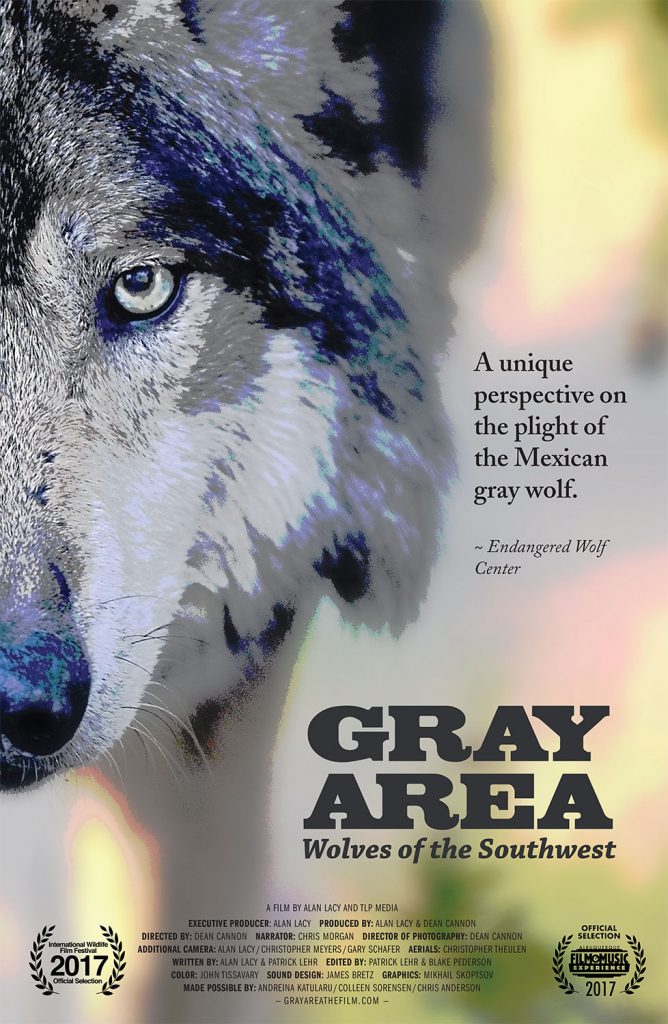
Gray Wolves of the Southwest
Producer: Alan Lacy
TRT: 50min
In the American Southwest, a unique species of wolf unlike any other is making a comeback. Considered extinct nearly 40 years ago, the little known Mexican gray wolf has slowly pulled back from the very brink — against all odds. From a founding population of just seven animals, this species has slowly grown to a current wild population of approximately 100, only to face a new threat from within: its own genetics. As part of a bold recovery mission, one lone wolf is given a chance to offer new hope for the survival of her species. In telling this story, narrated by Chris Morgan, “Gray Area” explores whether there can be a balanced and sustainable future where ranchers, conservationists, locals, and biologists alike can coexist with this apex predator.
BHUTAN: Taking the Middle Road to Happiness
Imagine a country where happiness is the guiding principal of government. Imagine a people who see all life as sacred and the source of their happiness, a place with an abundance of clean and renewable energy, a nation committed to preserving its culture. Imagine a Kingdom where the King lives in a simple wooden cottage and judges his progress by the country’s “Gross National Happiness.” Where is this Shangri-La?
Bhutan. But can a place like Bhutan really exist? Can such ideals be realized? Can this small, geographically isolated country tucked away in the Himalayans truly protect its environment and culture as they open their doors to the West?”
The idea for shooting the documentary started over two years ago when filmmaker Tom Vendetti wrote a letter and proposal to the Royal Government of Bhutan asking if he could make a documentary about the country.
“I was always fascinated by Bhutan,” says Tom Vendetti. “When I was in Nepal in 1983, there was a buzz about this beautiful and isolated country called Bhutan but at that time is was not only expensive to get into the country but very few numbers of outsiders were permitted entry to visit. Many years later when I went to an exhibit of John Wehrheim’s captivating photography of Bhutan at the East-West Center on O’ahu, my interest was rekindled to learn more about this mysterious and intriguing land.”
To his amazement and joy, Tom received a fax six months later. “Your proposal has been accepted by the Bhutan government. When will you and your crew be coming to Bhutan?” With introductions and travel arrangements made by Thinley Choden of Bhutan Tours and Travels, Tom was initially given permission to document the country’s production of clean and sustainable energy with run of the river hydroelectric plants. As the proposal developed it became clear that there was a bigger story to be told, the concept of “Gross National Happiness”. With this in mind, Tom submitted a list of questions to the government that explored “Gross National Happiness” The questions were approved and interviews with the Prime Minister and other government officials scheduled. Some of the questions were political in nature, exploring Bhutan’s readiness to cautiously open its doors to the West.
After the documentary was given approval by the Kingdom of Bhutan, Tom Vendetti consulted extensively with Bhutan’s cultural experts to present Bhutan in an authentic, culturally appropriate manner, and to explore the four pillars or platforms of “Gross National Happiness” proposed by the government: (1) Economic development, (2) Environmental preservation, (3) Cultural promotion, and (4) Good governance.
“As a psychologist, I was fascinated by the concept of ‘Gross National Happiness,’ and I wanted to film in Bhutan because I thought their model to promote happiness could be one for the whole world to follow,” reflects Tom Vendetti. “I also thought it could be a great opportunity to have this message air here in the USA to make more people aware of Bhutan and its dedication to make its people happy.”
Tom immediately called his production crew to accompany him to Bhutan to document this remarkable country: Composers and musicians Paul Horn and Christopher Hedge, photographer John Wehrheim, Bob Stone (who previously edited a number of his documentaries) and Scott Dewar.
He and his crew filmed in Bhutan during the months of October and November, 2004, also filming a concert performed by Paul Horn, Christopher Hedge and Bhutanese musician Jigme Drukpa held on November 11,2004 in honor of the King and his birthday, the Royal Family and people of Bhutan. With over 60 hours of footage shot and stock footage presented to him by the Bhutan Broadcasting System, Tom Venedtti and his group returned to Maui to begin the post-production on the film.
Trailer: https://vimeo.com/5127130
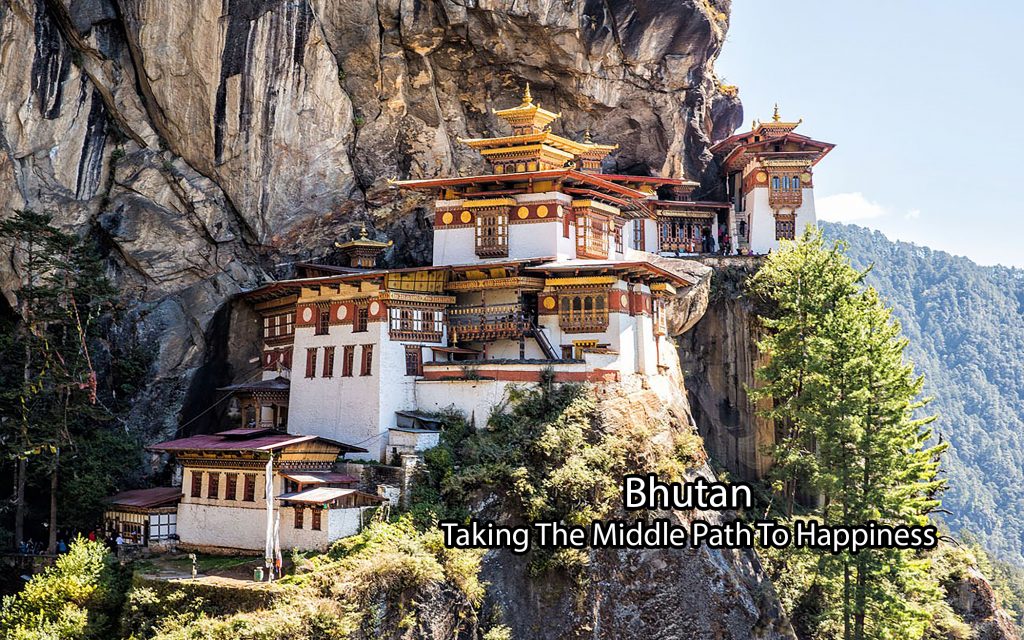
“It truly was a once-in-a-lifetime and inspiring experience,” reflects Tom Vendetti. We were amazed at the joy and optimism of the people and the overwhelming support for their government and its ideals.”
The diverse people that comprise the country of Bhutan, a people never colonized or conquered, are united in a shared vision – a vision that the world is impermanent, fragile yet impenetrable, and that the sacred spirits living in all forms of life are the true source of the world’s wealth.
“Most Bhutanese are Buddhists, regard nature as a living, breathing entity and hold it precious and sacred,” he continues. Damaging nature, therefore, has its consequences. Because of their belief system, they have a very high regard and respect for the land and their environment.” Representative of this for him was their creation of hydroelectric plants in Bhutan. With loans from the government of India, Bhutan has built several mammoth underground hydroelectric plant. The Bhutanese pay less for electricity than any other nation in the world and produce so much power that most of this energy is exported to India financing the bulk of the government’s budget and providing free health care and education to every Bhutanese. All this achieved with run of the river hydro plants, sustainable energy without massive dams, deforestation or displacement of people.
“And what also struck me was the intelligence of the nation’s future, its young people, who are grounded in the Buddhists concepts of living a good, healthy and grounded life – taking the middle path,” he continues.
The concept of taking “the middle road” is one rooted in the Bhutanese view of the world, anchored in Tantric Buddhism and animistic Bon that sees nature as living mysticism. The natural world, mapped in their minds with deities, divinities and spirits, is a living system inseparable from themselves and not a disconnected resource to be plundered for unsustainable consumer goods.
The Buddha shared a simple message: happiness lies in the middle path. Neither overindulging in the world’s pleasures nor rejecting the world’s goodness can lead to enlightenment. Happiness can only be found by taking the middle path – the path that balances the needs of mankind with the powerful spirits of nature.
While Tom and his crew were in Bhutan the government was working towards a transition from kingdom to democracy having looked at over 50 constitutions of democracies around the world, extracting the best of all these constitutions for Bhutan.”
“It’s a lesson for all of us to learn and to model ourselves after,” concludes Tom Vendetti.

Keola Beamer: Mālama Ko Aloha (Keep Your Love)
“The idea of aloha is Hawaii’s greatest gift to the world. But a lot of people don’t know what it is, or how to find it, or how to discover it in our own hearts.” These words, spoken by legendary Hawaiian composer and musician Keola Beamer, provide insight to the multi-cultural musical collaboration featured in the PBS Hawaii production Keola Beamer: Mālama Ko Aloha (Keep Your Love).
Based upon Beamer’s belief that musicians from different backgrounds can remain true to their own cultural heritage while learning and incorporating ideas from others, Mālama Ko Aloha features inspiring and unique musical performances by Beamer and a brilliant ensemble of musicians including Native American flute player R. Carlos Nakai and American jazz pianist virtuoso Geoffrey Keezer.
Last Rush of the Wild West
Director: Jennifer Ekstrom
TRT: 46 min
About the Film:
Last Rush for the Wild West exposes how impending tar sands and oil shale strip mining would destroy massive, pristine landscapes in Utah and devastate the already imperiled Colorado River watershed. The foreign corporation behind America’s very first tar sands strip mine is gearing up and claiming they will begin to produce fuel in early 2017.
This strip mining would jeopardize drinking water quality and quantity for thirty-six million people downstream. It would increase air pollution in Salt Lake City, where air quality is already the worst in the Nation. It would accelerate climate change. The risks to humanity are staggering.
Yet the State of Utah approved America’s precedent setting commercial tar sands strip mine at PR Spring despite catastrophic impacts to human health caused by tar sands strip mining in Alberta, Canada.
This film asserts the risks are not worth it, while refuting claims that tar sands and oil shale strip mining would create better economic conditions and lead our nation toward energy independence. American taxpayers are subsidizing the foreign corporation pursuing the project, with 85 million dollars, mostly public funds, already spent to construct the road to the site. And there is no indication this product would be used in the United States.
Last Rush for the Wild West highlights a resolute contingent of local Utah citizens, and wise indigenous leaders from tar sands impacted communities Canada, as they encourage American taxpayers and voters to stand up with them and reject this impending disaster. Last Rush for the Wild West addresses one of the most under-reported and critical environmental issues of our time. It presents Americans with a rare opportunity to activate before it’s too late!
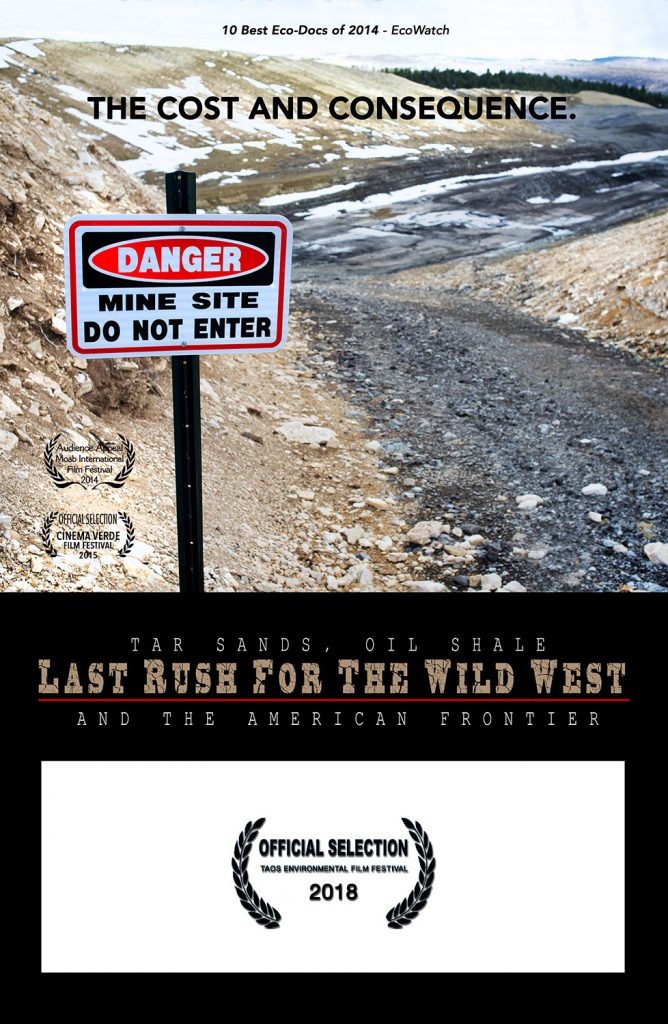
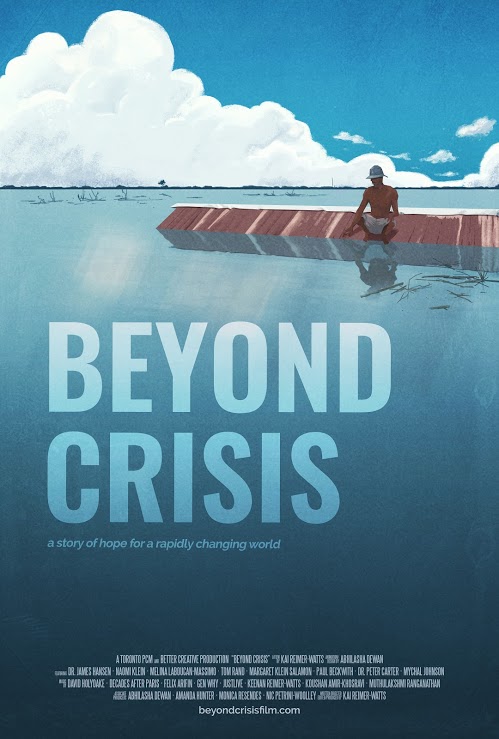
Beyond Crisis
Synopsis
BEYOND CRISIS is a story of hope for a rapidly changing world: a meditative call to action that explores what it means to be living in this new era of climate change, as told by over fifty diverse voices from across Canada, the U.S. and beyond.
The film is also a unique conversation piece: a grassroots model for what a healthy conversation on climate could look like, inspiring YOU to take the next steps in discussing these issues with your friends, community and loved ones.
The reality of climate change may be frightening, but there is good news. Diving into the dramatic climate and energy story unfolding all around us today, this film paints an inspiring vision of the better world we could be building together – if we find the courage to face our shared global crisis, saying YES to a far safer, more sustainable and more compassionate clean energy future.
Beyond Crisis is a story of truth that bridges both poetry and science, intellect and the human heart – a beacon of hope to all people who are searching for an inspiring path beyond climate change, and a future we can actually believe in.A hand-crafted portrait of a growing social movement united by our shared crisis, this film empowers YOU to continue the world’s tough climate discussions at home, in school and in your community – to build a #SafeClimateFuture for all of us.
Watch, get inspired and start a conversation on climate!
Redefining Prosperity: The Gold Rushes of Nevada City
John de Graaf, Greg Davis, Jennifer Ekstrom | 2017 |
TRT: 57 min.
Born in the California Gold Rush, Nevada City was once the scene of some of the most destructive environmental practices on earth. By the 1960s, the town was a backwater, its extractive industries dying. Then it was discovered by the “back to the land movement.” It was a second gold rush but with a different idea of gold based on nature, community and a sense of place. The Yuba River brought conflicting factions of the community together while different ideas about the meaning of wealth have led to changes in local food production, education, arts, music and a commitment to building community. Redefining Prosperity: The Gold Rushes of Nevada City includes two dozen of Nevada City’s most active citizens and their stories.
More info: www.johndegraaf.com

SHORT
Florotica
Dalai Lama & Happiness
Shot From Above
Dalai Lama & China
Global Population Speak Out
FILMS
Rooted in Love
Nuestra Acequias
Seed Sovereignty
Agua Es Vida
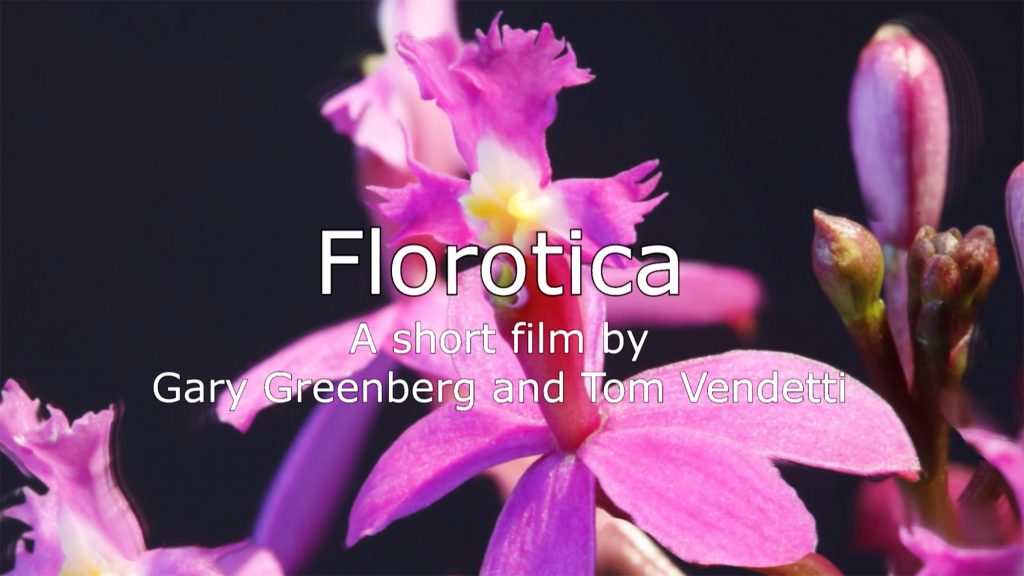
Florotica
Directed by: Dr. Tom Vendetti
This film takes us on a dramatic three-dimensional journey through the amazing world of flowers from the insect’s point of view.
It shows us the magnificence of flowering plants using Dr. Greenberg’s unique 3D microscopes, displaying images magnified hundreds of times, with a clarity and depth never before seen.
Soundtrack: “Dancers in the Land of Pō” by Keola Beamer
Dalai Lama & Happiness
“I believe that the very purpose of our life is to seek happiness.” — The Dalai Lama
Tenzin Gyatso, His Holiness the Fourteenth Dalai Lama, is the spiritual and temporal leader of the Tibetan people. As is illustrated by the quote above, the Dalai Lama believes that the very purpose of our existence is to seek happiness.
The film Dalai Lama & Happiness is an interview that Dr. Tom Vendetti conducted with the Dalai Lama. The Dalai Lama spoke about happiness from a personal and global perspective. The interview was conducted in Dharamshala which is where the Dalai Lama’s resides and he headquarters of the Central Tibetan Administration.
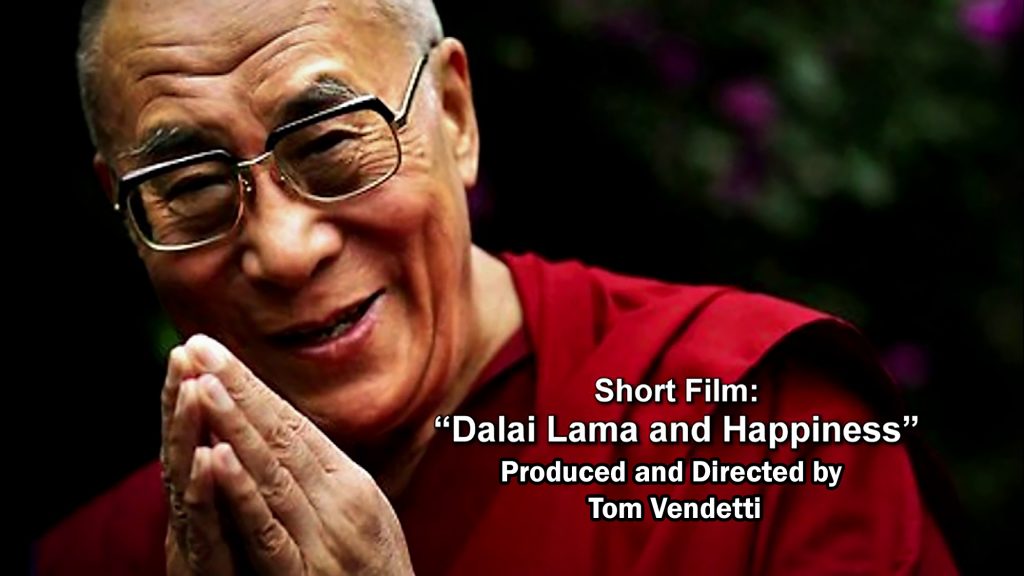
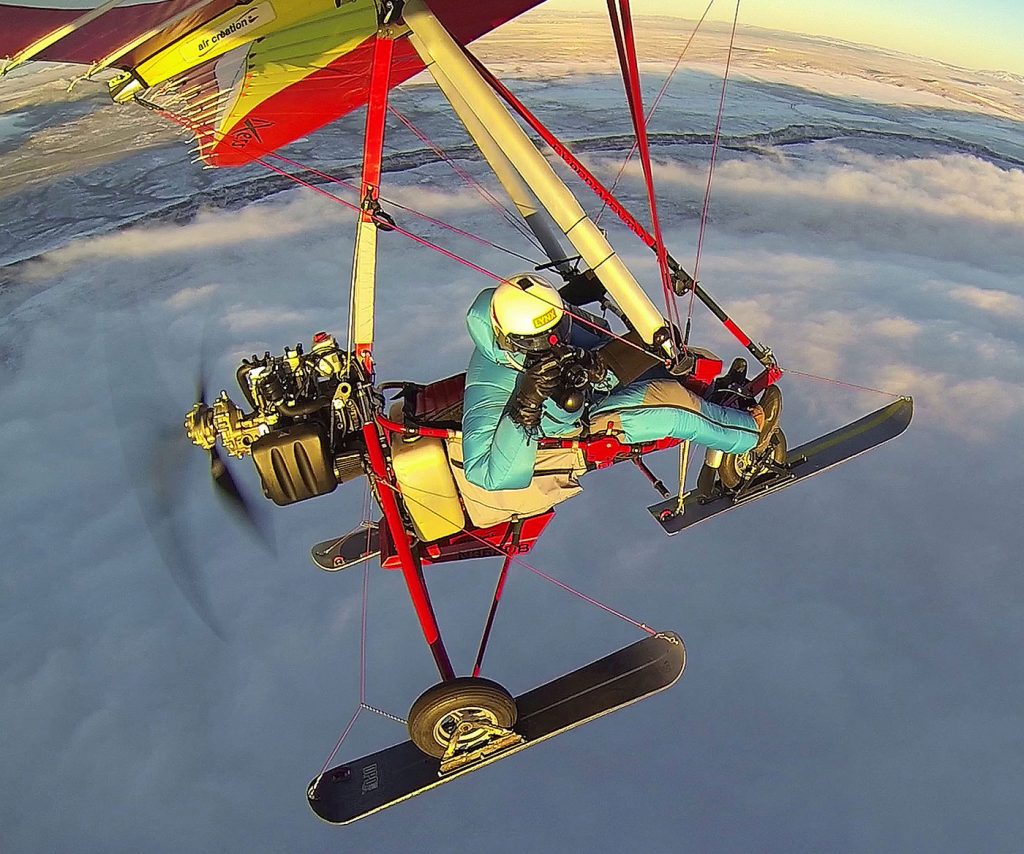
Shot From Above
Thursday 4/19 8pm
Director: Chris Dahl-Bredine
I have always been fascinated by flight. For as long as I can remember, I have watched the birds in wonder. What does it feel like to fly through the air? What does our planet look like from up there? I had vivid dreams at night where I would suddenly realize I was dreaming and take flight, soaring above magnificent landscapes and feeling elation at the freedom to fly anywhere I wanted.
In 1999, I had brush with death while skiing at Taos Ski Valley, in New Mexico. I was pushed off of a cliff by a small avalanche and I thought my life was over. As I slowly recovered, I re-evaluated my life. The biggest thing I came away with was that I wanted to live more fully and follow my wildest dreams. I now see that our time here is so brief and precious.
I finally decided to learn to fly. I knew I wanted to be in an open aircraft so I could truly experience and connect with the world around me as fully as possible.
I was most drawn to the weight shift or hang glider wing, and once I got to fly one I knew this was it—my dream flying machine!
I started to experience the world in a completely new way and naturally I wanted to share what I was seeing. Photography became the obvious thing to pursue, and my creative side came to life.
In our modern culture we have been conditioned to think and live in a very disconnected manner. Many of us don’t know where our food comes from, or what it takes to have clean water to drink. We don’t fully comprehend what it takes to bring these basic necessities of life to us. The world is divided up into properties, states and countries with borders, and people are separated by political stance, religion, and economic status, not to mention race and gender.
Through many years of seeing the world from above, my perceptions have changed. I’ve begun to see a great interconnectedness of all things, from huge air masses and weather systems to giant ecosystems that all interact with and need each other to sustain life as we know it on earth.
I feel now it is the time for us to begin to reconnect with each other and our environment and all life forms that inhabit this planet with us if we are to survive, and if our children and future generations are to survive and thrive on this exquisite planet.
With these images of our world I hope to impart this sense of wonder and beauty and interconnectedness that is vital to what we all truly want: a peaceful, abundant and joyful existence where we can all reach our fullest potential as people of the earth together. Enjoy!
Global Population Speak Out
A short video about the possible paths for very different futures and the human health and human rights enhancing approaches that can create tremendous positive global change, such as education for all girls and boys and family planning availability for every one. Plus, the understanding that we must love and nurture the natural world, just as we must love and nurture our children.

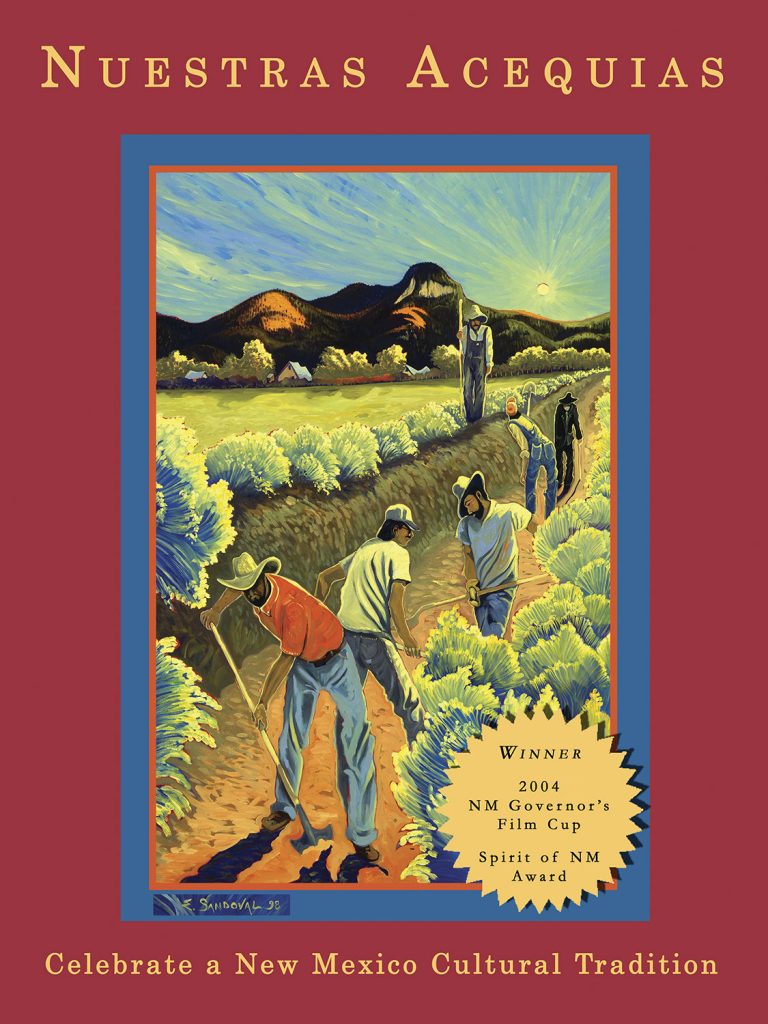
Nuestras Acequias
NUESTRAS ACEQUIAS is a A Rivers & Birds Production cinematography of Doug Crawford.
This short documentary NUESTRAS ACEQUIAS won the NM Governor’s Cup competition.
Seed Sovereignty
Produced by: Miguel Santistevan
Published in Yes Magazine, Ea O Ka Aina: The Good Food Revolution: New Mexican activist Miguel Santistevan describes how, in the Pueblos, each type of corn “drank” from its own river, producing seed that was specific to its own watershed. One of the world’s most influential creation stories comes from the Book of Genesis in the Bible. It is often told incorrectly, without the warnings and prohibitions that are in the story—as if the children of Adam and Eve were entitled to control creation. Whether you read this story literally or metaphorically, it has had a powerful impact on Western thought. Many scholars believe that our current environmental conditions came about because our society interpreted this story as a license to dominate nature. When told this way, the development of our military-industrial system of agriculture makes sense. We can see the long arc of history, the search-and-destroy missions throughout the ages, including manifest destiny and the conquest of native peoples, their lands, and their well-developed integrated food systems.
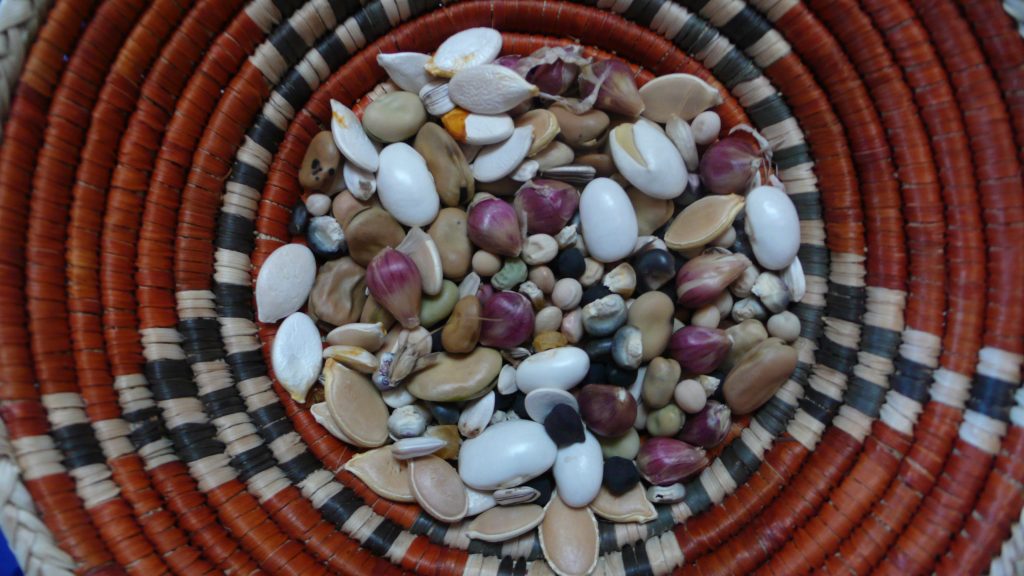

Agua es Vida
Saturday 4/21 6PM
DIRECTOR: Pablo Irlando-Wildman
Based in Taos, New Mexico and focused specifically on the Rio Fernando, this Sancre Productions film begins up high in the Taos watershed and follows the water down from the mountains, into the Rio Fernando and ultimately through the acequia system that then distributes the water to farms and pastures throughout the community. The film then takes us on a journey through the community of farmers and ranchers who depend on the acequias for their livelihood, and helps viewers understand acequias as a system of governance that, when well-attended and maintained, helps ensure a healthy community, healthy lands and sufficient water for all.
Avanyu
Director/Producer/Director of Photography/Writer: Dana Romanoff
Co-Director/Co-Producer/Editor/Writer: Amy Marquis
Editor/Cinematographer: Chuck Smith
American Rivers, Executive Producer: Sinjin Eberle
The Avanyu, or water serpent, is a powerful deity of the Tewa people. It is revered as a guardian of water whose curved spine suggests a flowing river. For the Tewa in New Mexico, the river is life. And to Louie Hena and his family it is where they make their living. In this short film, take a trip down the Rio Grande with Louie and his family in their Native Culture. Feast and Float to learn about their connection to this Wild and Scenic stretch of water. Created by National Park Experience for American Rivers with support from YETI in honor of the 50th anniversary of the Wild & Scenic Act.
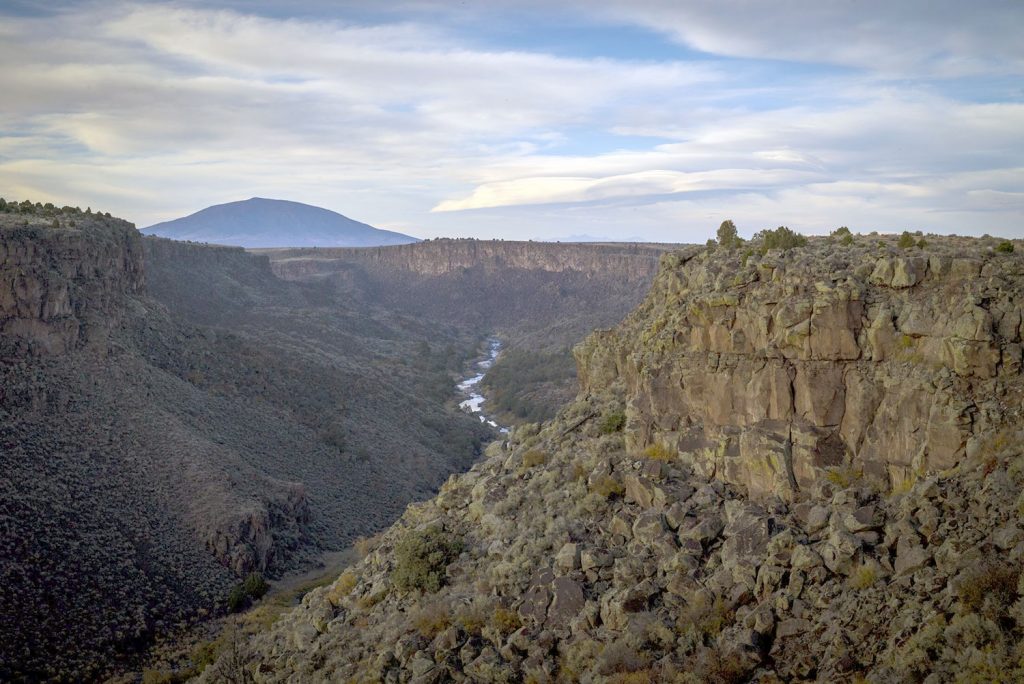
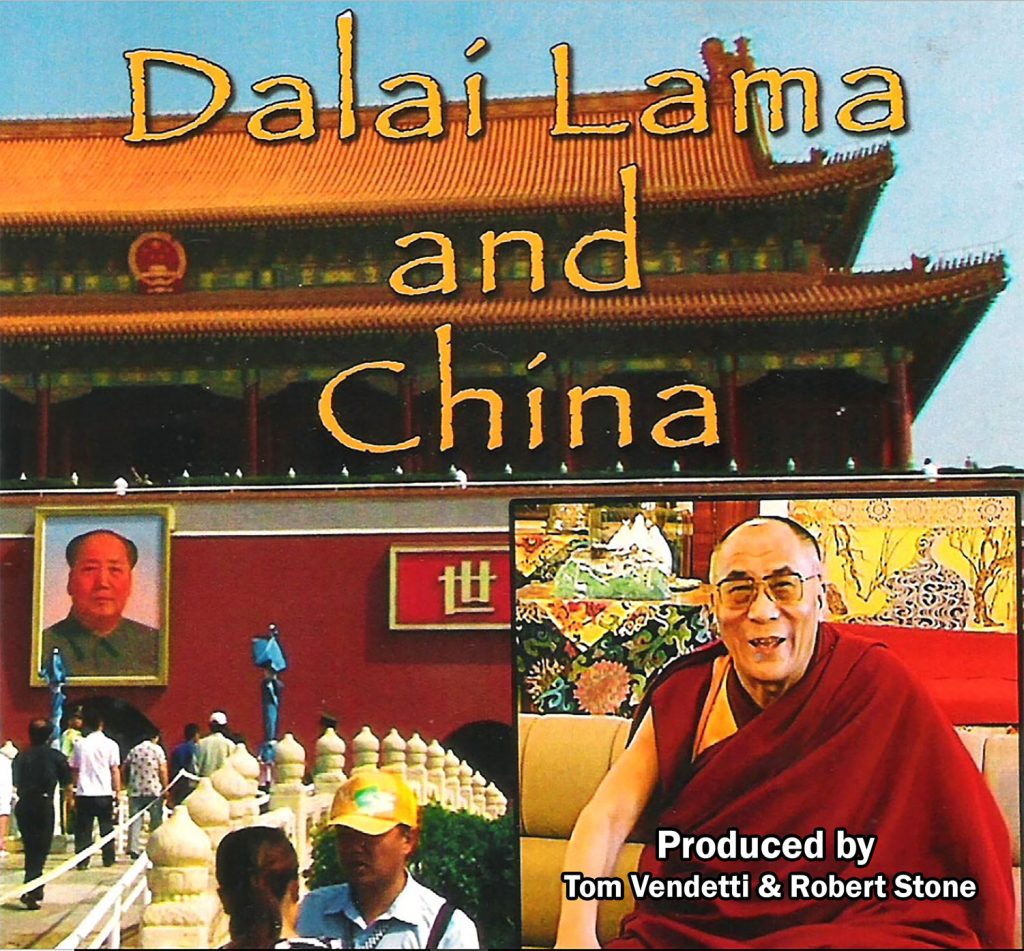
Dalai Lama and China
A short film featuring His Holiness the Dalai Lama, addressing the Chinese occupation of Tibet and the survival of Tibetan culture.
Chinese troops invaded Tibet in 1950, bringing sudden and violent end to Tibet’s centuries-old isolation beyond the Himalayas.
In 1959, in the wake of the invasion, the Dalai Lama, Tibet’s spiritual and temporal leader, along with nearly 100,000 Tibetans, fled to exile in India. The Dalai Lama established the Central Tibetan Administration in McLeod Ganj, a hilltop town in northern India, working for a negotiated settlement with China.
In the years after, Tibet’s people under China’s rule are being continually persecuted, and their religion and culture systematically eradicated, through dilution as well as active destruction, to the brink of extinction.
